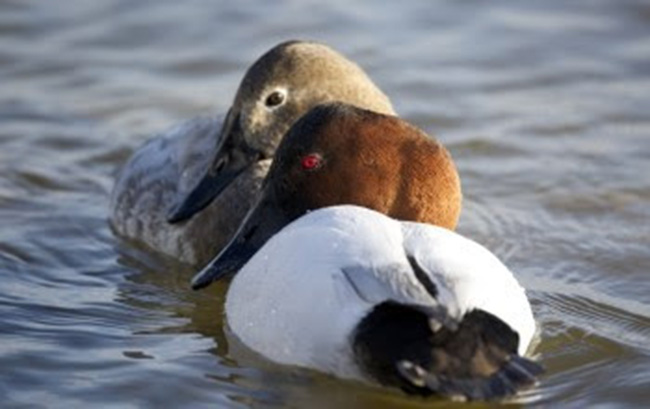REGION – Fall is a magical time, as the rainbow of color emerges across the landscape – and brings birds just as colorful! Waterfowl, waterbirds, shorebirds, songbirds and raptors will begin to pass through Michigan on their way south to their wintering grounds. Michigan lies at the intersection of the Mississippi and Atlantic flyways, two migration “superhighways” that bring more than 380 bird species through the state each fall.
Michigan’s coastal and inland wetlands act as important resting and refueling zones for migratory birds; if you want to get in some quality fall birding, these areas are among the best habitats to visit. Wetlands provide birds with water, food and shelter during their long migration journeys, and many birds follow the coastline on their way south.
Whether you’re a birding newbie or a seasoned birder, keeping an eye on the weather can help you prepare for your next fall trip. Wind and other weather events can help you predict bird movements. Storms and cold fronts can often result in an awe-inspiring migratory event known as a “fall-out,” when a dense concentration of migratory birds hunkers down in a particular area until poor weather passes. Cold fronts also tend to have northerly winds, which blow north to south, that aid our feathered friends in their southward migration. Regularly check your weather radar or use BirdCast, a special forecast tool that predicts when birds will be moving near you.
Here’s what bird species to expect over the next couple of months:
- September: Raptors start to move in great numbers. Waterfowl, mainly dabbling ducks like mallards and blue-winged teal also head south, with gulls (including some rare species), and songbirds (including blue jays, warblers, thrushes, and ruby-throated hummingbirds).
- October: Diving ducks, like common goldeneye, long-tailed duck, and canvasback, arrive this month, along with northern finches like dark-eyed juncos and pine siskins. Northern breeders, such as ruby-crowned and golden-crowned kinglets, American pipits, and horned larks, start to move south. Sandhill cranes start to migrate in great numbers. Warbler and thrush migration starts to wind down and hawk diversity increases.
Learn about what birds to expect in November by visiting Audubon’s website.
Want to see the wonders of bird migration in action, but not sure where to start? Explore the Michigan.gov/Birding page for information about Michigan’s birding trails and migration hot spots.
MI Birds is a public outreach and engagement program created by Audubon Great Lakes and the DNR, which aims to increase all Michiganders’ engagement in the understanding, care and stewardship of public lands that are important for birds and local communities.


